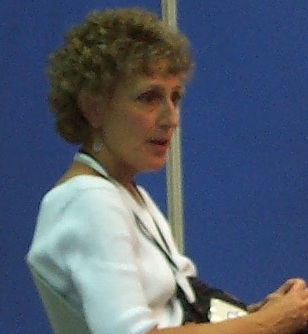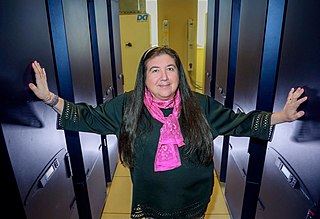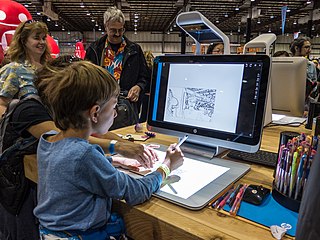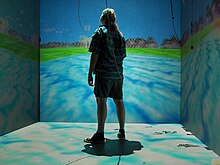
Virtual reality (VR) is a simulated experience that employs pose tracking and 3D near-eye displays to give the user an immersive feel of a virtual world. Applications of virtual reality include entertainment, education and business. Other distinct types of VR-style technology include augmented reality and mixed reality, sometimes referred to as extended reality or XR, although definitions are currently changing due to the nascence of the industry.

Augmented reality (AR) is an interactive experience that combines the real world and computer-generated content. The content can span multiple sensory modalities, including visual, auditory, haptic, somatosensory and olfactory. AR can be defined as a system that incorporates three basic features: a combination of real and virtual worlds, real-time interaction, and accurate 3D registration of virtual and real objects. The overlaid sensory information can be constructive, or destructive. This experience is seamlessly interwoven with the physical world such that it is perceived as an immersive aspect of the real environment. In this way, augmented reality alters one's ongoing perception of a real-world environment, whereas virtual reality completely replaces the user's real-world environment with a simulated one.

Mixed reality (MR) is a term used to describe the merging of a real-world environment and a computer-generated one. Physical and virtual objects may co-exist in mixed reality environments and interact in real time.

A 3D display is a display device capable of conveying depth to the viewer. Many 3D displays are stereoscopic displays, which produce a basic 3D effect by means of stereopsis, but can cause eye strain and visual fatigue. Newer 3D displays such as holographic and light field displays produce a more realistic 3D effect by combining stereopsis and accurate focal length for the displayed content. Newer 3D displays in this manner cause less visual fatigue than classical stereoscopic displays.

A head-mounted display (HMD) is a display device, worn on the head or as part of a helmet, that has a small display optic in front of one or each eye. An HMD has many uses including gaming, aviation, engineering, and medicine. Virtual reality headsets are HMDs combined with IMUs. There is also an optical head-mounted display (OHMD), which is a wearable display that can reflect projected images and allows a user to see through it.

Daniel J. Sandin is an American video and computer graphics artist, designer and researcher. He is a Professor Emeritus of the School of Art & Design at University of Illinois at Chicago, and co-director of the Electronic Visualization Laboratory (EVL) at the University of Illinois at Chicago. He is an internationally recognized pioneer in computer graphics, electronic art and visualization.
Thomas Albert "Tom" DeFanti is an American computer graphics researcher and pioneer. His work has ranged from early computer animation, to scientific visualization, virtual reality, and grid computing. He is a distinguished professor of Computer Science at the University of Illinois at Chicago, and a research scientist at the California Institute for Telecommunications and Information Technology (Calit2).
The Electronic Visualization Laboratory (EVL) is an interdisciplinary research lab and graduate studies program at the University of Illinois at Chicago, bringing together faculty, students and staff primarily from the Art and Computer Science departments of UIC. The primary areas of research are in computer graphics, visualization, virtual and augmented reality, advanced networking, and media art. Graduates of EVL either earn a Masters or Doctoral degree in Computer Science.
Fulldome refers to immersive dome-based video display environments. The dome, horizontal or tilted, is filled with real-time (interactive) or pre-rendered (linear) computer animations, live capture images, or composited environments.

Immersion into virtual reality (VR) is a perception of being physically present in a non-physical world. The perception is created by surrounding the user of the VR system in images, sound or other stimuli that provide an engrossing total environment.

Future Vision Technologies (FVT), operating from 1991 to 1995, was part of the second wave of companies working to commercialize virtual reality technology. The company was founded by a team out of the Advanced Digital Systems Laboratory in the department of Electrical and Computer Engineering at the University of Illinois at Urbana-Champaign. The three original members, Matt Klapman, David Frerichs, and Kevin Lee, were later joined by John Belmonte. The company ceased to be an active entity when its PC card business was sold to Fujitsu Microelectronics.
A projection augmented model is an element sometimes employed in virtual reality systems. It consists of a physical three-dimensional model onto which a computer image is projected to create a realistic looking object. Importantly, the physical model is the same geometric shape as the object that the PA model depicts.

Maxine D. Brown is an American computer scientist and retired director of the Electronic Visualization Laboratory (EVL) at the University of Illinois at Chicago (UIC). Along with Tom DeFanti and Bruce McCormick, she co-edited the 1987 NSF report, Visualization in Scientific Computing, which defined the field of scientific visualization.
In computing, 3D interaction is a form of human-machine interaction where users are able to move and perform interaction in 3D space. Both human and machine process information where the physical position of elements in the 3D space is relevant.
Virtual worlds are playing an increasingly important role in education, especially in language learning. By March 2007 it was estimated that over 200 universities or academic institutions were involved in Second Life. Joe Miller, Linden Lab Vice President of Platform and Technology Development, claimed in 2009 that "Language learning is the most common education-based activity in Second Life". Many mainstream language institutes and private language schools are now using 3D virtual environments to support language learning.

IllumiRoom is a Microsoft Research project that augments a television screen with images projected onto the wall and surrounding objects. The current proof-of-concept uses a Kinect sensor and video projector. The Kinect sensor captures the geometry and colors of the area of the room that surrounds the television, and the projector displays video around the television that corresponds to a video source on the television, such as a video game or movie.

Carolina Cruz-Neira is a Spanish-Venezuelan-American computer engineer, researcher, designer, educator, and a pioneer of virtual reality (VR). She is known for inventing the cave automatic virtual environment (CAVE). She previously worked at Iowa State University (ISU), University of Louisiana at Lafayette, University of Arkansas at Little Rock, and she is currently an Agere Chair Professor at University of Central Florida (UCF).

Sprout by HP was a personal computer from HP Inc. announced on October 29, 2014 and released for sale on November 9, 2014. The system was conceived by Brad Short, Distinguished Technologist at HP Inc., who along with Louis Kim, Head of the Immersive Computing Group at HP Inc., co-founded and led a team within HP Inc. to develop and productize the computing concept.

In virtual reality (VR) and augmented reality (AR), a pose tracking system detects the precise pose of head-mounted displays, controllers, other objects or body parts within Euclidean space. Pose tracking is often referred to as 6DOF tracking, for the six degrees of freedom in which the pose is often tracked.
Immersive learning is a learning method which students being immersed into a virtual dialogue, the feeling of presence is used as an evidence of getting immersed. The virtual dialogue can be created by two ways, the usage of virtual technics, and the narrative like reading a book. The motivations of using virtual reality (VR) for teaching contain: learning efficiency, time problems, physical inaccessibility, limits due to a dangerous situation and ethical problems.












